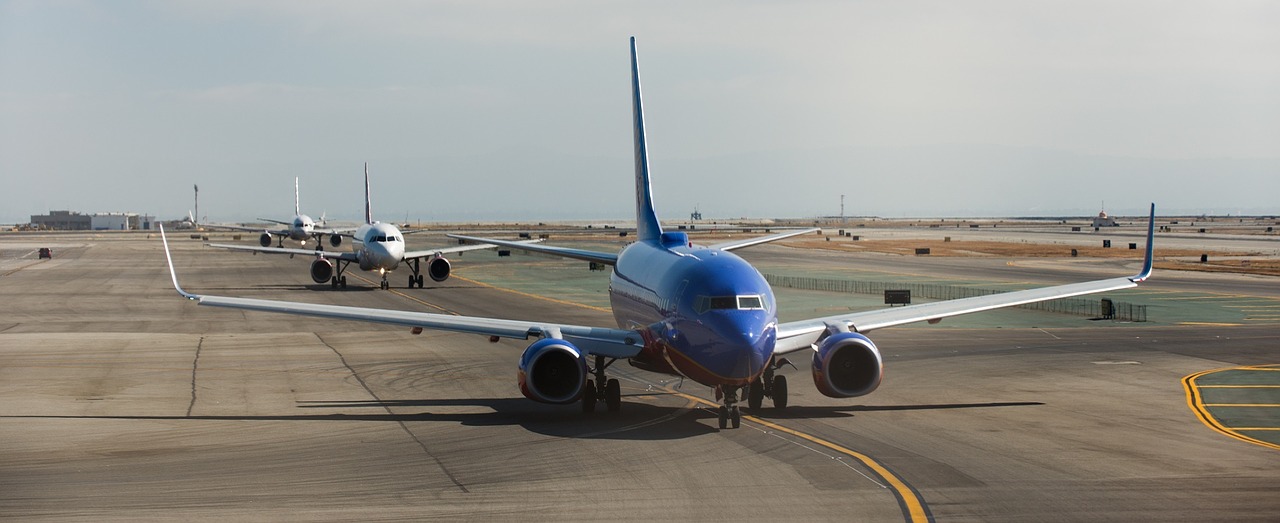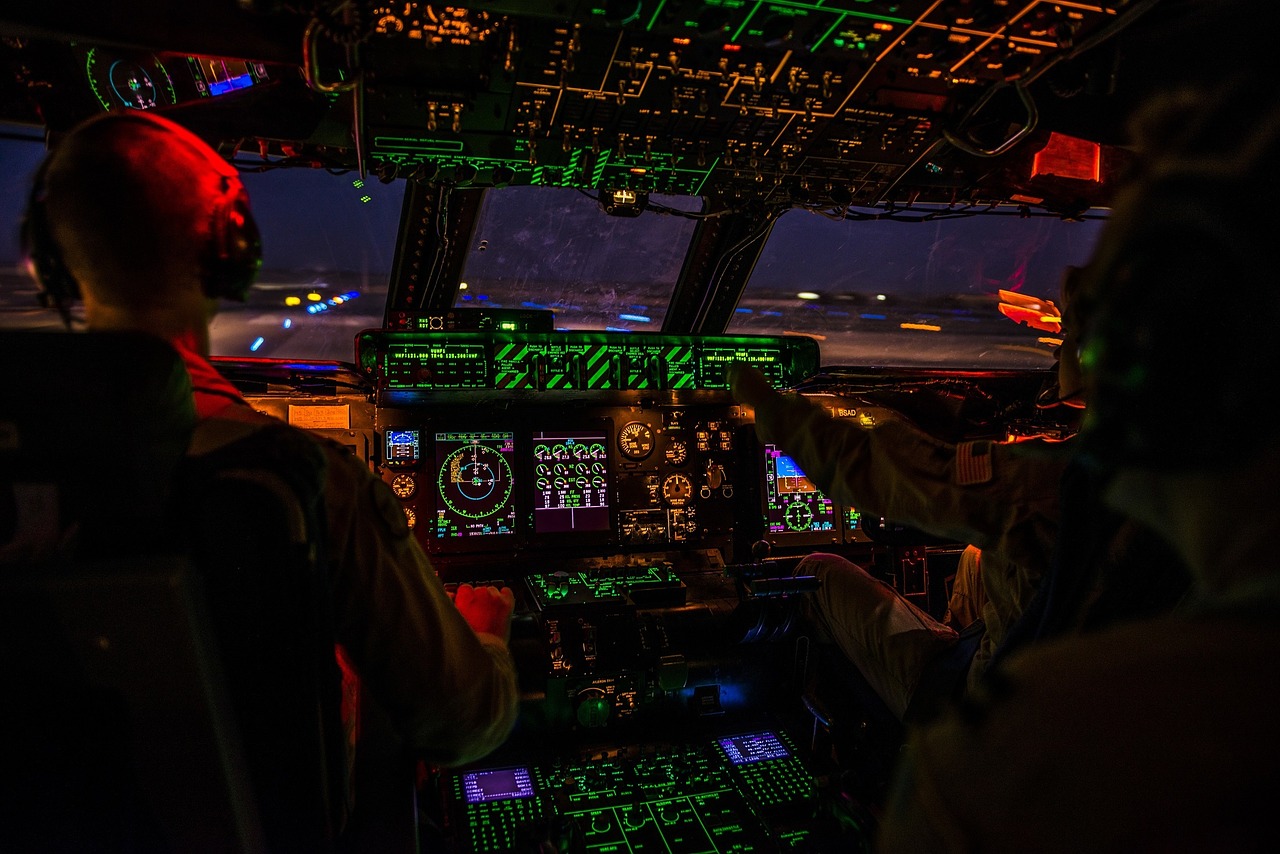This content was published: March 6, 2018. Phone numbers, email addresses, and other information may have changed.
Takeoffs, Turbulence, and Smooth Landings: Building our courses as we fly them
Posted by Heather Guevara

Copyright: 06photo / 123RF Stock Photo
In the field of distance education, you’ll commonly hear the phrase, “we are building the plane while flying it.” I hate flying, so I’m not a fan of this metaphor. In fact, I hate flying so much, I can’t believe I’m even writing this post. My palms are sweaty just thinking about flying. (Maybe this is a quest to squeeze some meaning and purpose out of my years of embarrassment and shame.) Nonetheless…
imagine the plane as your course, the students as passengers and crew, and you as the pilot.
As online faculty, we need to make “inflight” tweaks to courses, prepare our students for a smooth landing, and simultaneously prep the plane for the next takeoff. Oh, and sometimes we’re flying two or more planes at the same time! (I’m already seeing there are limits to this metaphor because the idea of flying two planes at once is ridiculous, but please stay onboard with me if you can bear it. I think we can get somewhere with this.)
The following are my reflections from some not-so-smooth flights over the years teaching online at PCC.
A safe and on-time takeoff is imperative
Course content copied? Check. Dates changed? Check. Welcome message posted? Check. Discussions updated? Check. For a complete list of pre-flight safety checks, check out the Getting Your Class Ready at the Start of Each Term page. (I once learned the hard way about a “Delete all module content” button the night before the start of the term. Don’t worry, it’s hard to find. I don’t recommend getting your course ready the night before the start of the term.)

One of my most memorable flights was a departure out of Long Beach. It was so windy that day that I thought the palm trees were going to snap. I spent the entire time at the gate considering taking a different flight the next day. I boarded the plane anyway. The captain never mentioned the wind and within a few minutes we were at our cruising altitude. Because of the experience of the pilot, you wouldn’t have known that we were flying out in high winds. Course takeoff sets the tone for the entire term.
Don’t wait until takeoff to make sure your students are aboard
An updated Course Details Page prior to registration helps students learn about your course and decide if this is a flight they might want to take. Will there by cushy seats? An onboard meal? Other entertainment? Will they be asked to shape their learning experiences by playing the roles of crew, captain, and passenger at different points in the flight? One to two weeks prior to the start of the term, send your students a personalized email message about the course (“This is your captain…”) and include a copy of the syllabus. This sort of communication will help make sure that the students are in their seats with their seatbelts fastened for a safe and on-time start-of-term takeoff.
Oh, no! There’s turbulence
You’ve done everything you can to ensure a safe and on-time departure. Your crew and passengers know what to do in the case of catastrophic events, but you have suddenly been caught off guard by unexpected mid-flight turbulence. Do not panic. Once the captain and flight crew are caught panicking, there’s little hope for the passengers (especially ones like me). Remember that turbulence is normal. No matter how hard you’ve worked to follow the best flight path, sometimes we can’t predict what will work for our students in a given term. Sometimes there are outages. (An outage sounds extra scary in this metaphor). Sometimes there are snowstorms. Sometimes our beautifully crafted assignments fail. Sometimes we screw up release dates. Sometimes we forget to grade a late assignment.
Most students are forgiving of a little mid-flight turbulence– they just want to know you are there and are working on a plan to get things back on track. Your presence in the course and ability to make reasonable and timely changes to the flight path or altitude is what our students appreciate. Students will panic a little (OK, some a lot) when they can’t find the captain or a single member of the flight crew to assure them that there will be a return to smooth travels soon. Monitor your emails. Pay attention when several students have not submitted a quiz, an assignment, or failed to participate in a discussion. Were your deadlines unclear? Were the assignment details vague? Was there a broken link? This sort of inflight course monitoring helps you make in-the-moment adjustments so that you can get back in the air quickly. Maybe you’ll need to drop altitudes a bit so the cabin will quickly resume regular functions. Most of all, our students want to know we are still onboard with them.
Don’t forget to enjoy the view from the cockpit
Sure. There may seem like there are a lot more things to screw up in an online course compared with a face-to-face course. (Remember, my run-in with the “Delete all module content” button? Yeah, you get the idea.) There are the emails to respond to, the messed up due dates, the broken links, the videos that won’t play, and a seemingly endless ways I have managed to make my own job as an online instructor harder than it should be. However, do not forget that online learning is the only option for some of our students. Many students are juggling life demands that don’t permit for on-campus instruction. You get the chance to provide high-quality online education for these students. You get to share your passion for your discipline. You get to immerse them in media that you might not otherwise get the chance to in a face-to-face setting. You get to see the students grow and engage with their peers.

Be forgiving of your mistakes (trust me, this is a big one) and use the friendly staff at the Faculty Help Desk for when you need help you can’t find in the manual. (When I first met Donna Swanson, I wanted to hug her. I don’t hug and I don’t fly. That’s how patient she’s been with me over the years and I’ve screwed up a lot.) Most of all, don’t forget to enjoy the view from 39,000 feet. When you’ve reached cruising altitude, you really get to teach. That is, after all, why you got into this work.
Prepare for landing
Let’s face it. We’re on a quarter system so we are constantly preparing for landing when it seems we just reached cruising altitude. Send Course Progress Notifications (CPNs) at critical points in the term to students who are struggling. (I’ve sometimes sent them to students doing well in my courses, too.) CPNs can be especially helpful after midterms. Get caught up on your grading and try to return feedback on critical assignments as quickly as possible. (I know this one is not easy. I used to provide myself small rewards for every five assignments I graded. I recommend, coffee, water, nut-free snacks, and little flight wing pins.) Make sure students know the impact of not submitting higher-stakes exams and assignments, as well as the impact of not participating in key end-of-term discussions. Send a few extra reminders about key due dates. You can help ready them for a smooth landing. You’ve been cleared for landing. It’s time to bring this plane, its crew, and your students in for a smooth landing.
Wait. Another takeoff? But I just landed this thing!
You’ve landed the plane. The crew and passengers have safely disembarked. You fill out your final entry in the flight log. You think about what worked and what didn’t. You reflect on choices made during times of turbulence. Did you do the right thing? Was that assignment worth it? Did students achieve the outcomes of the course? How many stayed onboard? You check current weather conditions. You make changes based on the past flight experiences, your expertise, and feedback from the crew and passengers…and you get ready to do it again all because you love the views from 39,000 feet.


Great analogies, Heather! I really like the analogy you made with turbulence – how if you plan for turbulence, it’s not so bad; but if you don’t plan for it, you will be surprised and it will be bad. As the person who trains faculty to teach online for the first time at PCC, I try to be mindful of preparing instructors for the turbulence, which will inevitably happen, while still remembering to enjoy the ride. We could make a comparison between the miracle of modern online courses (instant communication! available always! amazing learning tools!) and modern jet travel (fast! safe! see the Earth from space!). (I was going to add “comfortable!” but that’s true only for the folks flying First Class.) Thanks.
Clever analogy! I really enjoyed reading this. Perhaps you could do a version from the passenger’s (student’s) perspective and include it in the Introduction to Online Learning materials?
Recently, I had the worst flight of my entire life — trying to land in Malang, Indonesia. There were many problems with this flight, but one was that clearly there was something wrong … (we had been circling the city for a long time) and there had been no announcements! I have found that if I am honest with my students and tell them there’s a problem, it is far better than pretending as if nothing is wrong.
Also, it is important to remember the flight experience starts with “check in” at the airport — something us pilots have little control over. Just took a flight out of Paris, and I was so furious at the check in process at the counter! Stood in a long line only to be told that was the “New York” line, not the “Copenhagen” line. (What!) Having a good flight starts when the students enter the airport … The sings were non-existent, the process ambiguous and confusing … and my French stinks on top of it!